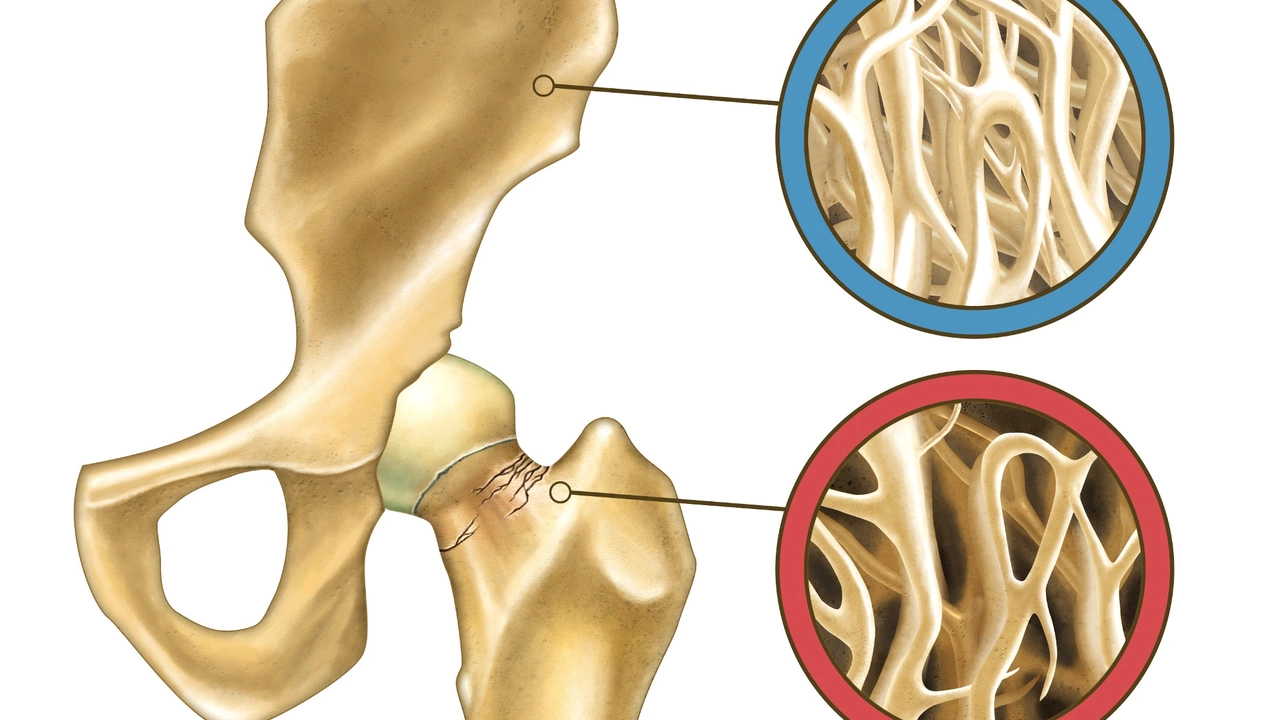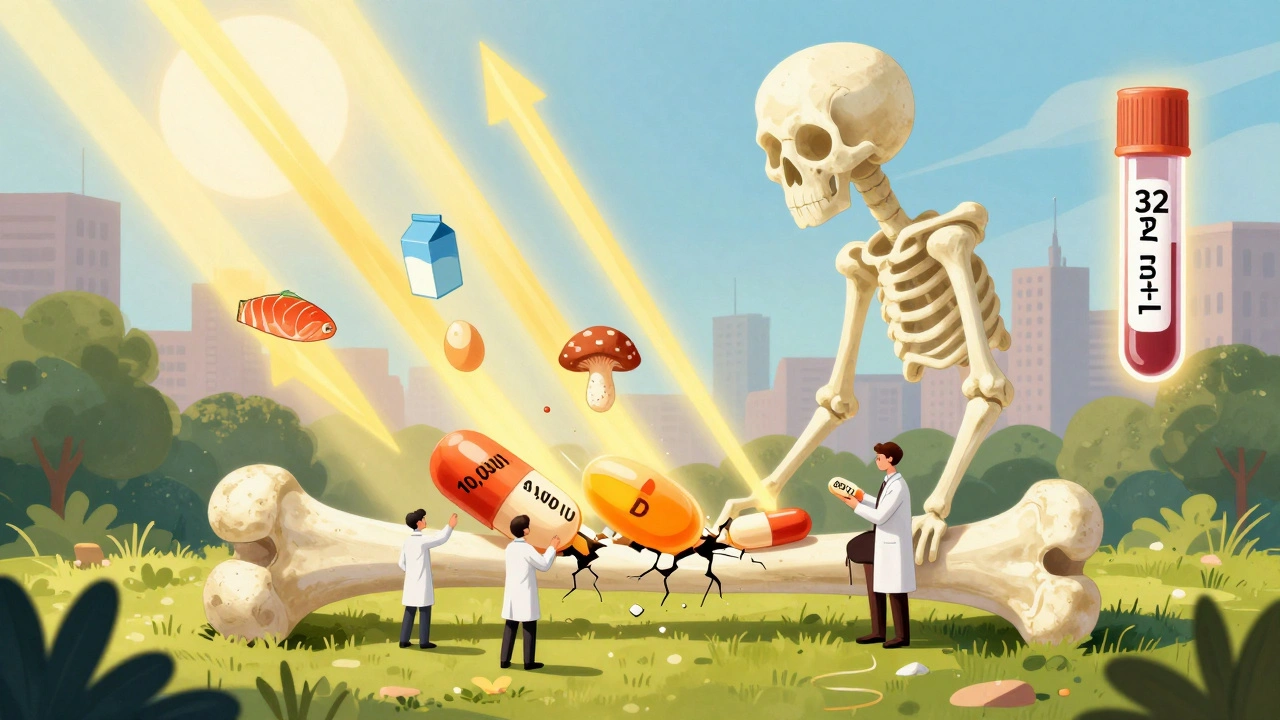Understanding Osteoporosis: A Silent Thief
Osteoporosis is often referred to as a "silent thief" because it slowly weakens our bones without any noticeable symptoms until a fracture occurs. It is a condition that affects millions of people worldwide, especially older adults. By understanding what osteoporosis is and how it affects our bones, we can better appreciate the importance of early detection and treatment.
In this article, I will discuss the importance of early detection and treatment of osteoporosis, and provide some insight into how we can maintain strong bones as we age. By being proactive, we can significantly reduce our risk of fractures and improve our overall quality of life.
Recognizing the Risk Factors
One of the first steps in preventing and managing osteoporosis is to recognize the risk factors that contribute to the development of the disease. Some risk factors are beyond our control, such as age, gender, and family history. However, other risk factors can be managed through lifestyle choices, such as maintaining a healthy diet, engaging in regular physical activity, and avoiding smoking and excessive alcohol consumption.
By understanding the risk factors for osteoporosis, we can take appropriate steps to minimize our risk and promote healthy bone density throughout our lives.
Screening for Osteoporosis: A Crucial Step
Early detection of osteoporosis is crucial for successful management of the disease. Screening for osteoporosis typically involves a bone density test, which is a non-invasive procedure that measures the strength of our bones. The earlier osteoporosis is detected, the more effectively it can be treated and managed.
It is generally recommended that women begin bone density testing at the age of 65, and men at the age of 70. However, if you have risk factors that increase your likelihood of developing osteoporosis, your healthcare provider may recommend screening at an earlier age.
Effective Treatment Options for Osteoporosis
Once osteoporosis has been diagnosed, it is important to begin treatment as soon as possible. There are several effective treatment options available, including medications, lifestyle changes, and physical therapy. Medications such as bisphosphonates, hormone therapy, and selective estrogen receptor modulators (SERMs) can help slow down bone loss and, in some cases, increase bone density.
Lifestyle changes, such as adopting a balanced diet rich in calcium and vitamin D, engaging in regular weight-bearing exercises, and quitting smoking, can also help to manage osteoporosis and reduce the risk of fractures.
Preventing Falls and Fractures
One of the main consequences of osteoporosis is an increased risk of fractures, particularly in the hip, spine, and wrist. Preventing falls is crucial to reducing the risk of fractures in individuals with osteoporosis. Simple measures such as decluttering the home, installing grab bars in the bathroom, and ensuring adequate lighting can significantly reduce the risk of falls.
Additionally, participating in balance and strength training exercises can help improve balance and muscle strength, further reducing the likelihood of falls and fractures.
Monitoring Bone Health: A Lifelong Commitment
Managing osteoporosis is a lifelong commitment. It is essential to regularly monitor our bone health, adhere to prescribed treatment plans, and make necessary lifestyle changes to maintain strong bones. Regular check-ups with healthcare providers and periodic bone density tests can help track the progress of our treatment and ensure that our bones remain as healthy as possible.
By taking charge of our bone health and staying informed about osteoporosis, we can reduce our risk of fractures and enjoy a higher quality of life as we age.
Empowering Ourselves and Our Loved Ones
Finally, it is important to empower ourselves and our loved ones with knowledge about osteoporosis. By understanding the importance of early detection and treatment, we can encourage our family members and friends to take proactive steps towards maintaining healthy bones. Together, we can work to raise awareness about osteoporosis and promote bone health for all.
Remember, the key to successfully managing osteoporosis lies in early detection, effective treatment, and ongoing monitoring of our bone health. By taking these steps, we can enjoy stronger bones and a better quality of life for years to come.







Ben Poulson
June 18, 2023 AT 18:26The article offers a thorough examination of osteoporosis, yet it would benefit from a stronger focus on dietary calcium sources. A systematic approach to early screening aligns with best practices in preventative medicine. Moreover, highlighting the cost‑effectiveness of bone density testing can motivate healthcare providers to adopt routine assessments. In sum, integrating these aspects would enhance the manuscript’s practical relevance.
Raghav Narayan
June 19, 2023 AT 21:40When addressing a condition as insidious as osteoporosis, a proactive stance is indispensable. Early detection not only facilitates timely pharmacologic intervention but also empowers patients to modify lifestyle factors that contribute to bone demineralisation. For example, incorporating weight‑bearing exercises such as brisk walking or resistance training can stimulate osteoblastic activity, thereby counteracting the progressive loss of bone mass. Dietary considerations play an equally pivotal role; adequate intake of calcium and vitamin D, whether through fortified foods or supplementation, forms the nutritional backbone of bone health. In clinical practice, the recommended dual‑energy X‑ray absorptiometry (DEXA) scan provides a reliable, non‑invasive metric of bone mineral density, enabling clinicians to stratify risk with precision. It is noteworthy that many guidelines now advocate for screening at ages younger than the traditional thresholds when additional risk factors-such as a family history of fractures, prolonged corticosteroid use, or chronic inflammatory disease-are present. The therapeutic armamentarium has expanded beyond bisphosphonates to include newer agents like denosumab and selective estrogen receptor modulators, each with distinct mechanisms and safety profiles. While pharmacotherapy can arrest bone loss, it should be regarded as complementary to, rather than a replacement for, comprehensive lifestyle modification. Education of patients and their families about fall prevention strategies-such as removing loose rugs, installing grab bars, and ensuring adequate lighting-further reduces the likelihood of fracture. Regular follow‑up appointments allow for monitoring of treatment efficacy, adjustment of medication dosing, and reinforcement of adherence to exercise regimens. Moreover, emerging research suggests that interdisciplinary care models, involving physicians, dietitians, physiotherapists, and occupational therapists, yield superior outcomes compared with isolated care. From a public health perspective, raising community awareness through outreach programs and screening events can identify at‑risk individuals earlier in the disease trajectory. In addition, policy initiatives that improve insurance coverage for bone density testing and osteoporosis medications can alleviate financial barriers that often deter patients from seeking care. Ultimately, the convergence of early detection, evidence‑based treatment, and continuous monitoring constitutes a robust framework for mitigating the silent progression of osteoporosis. It is our collective responsibility, both as clinicians and as members of society, to champion these measures and safeguard skeletal health for future generations. By doing so, we transform osteoporosis from an inevitable consequence of aging into a manageable condition with a substantially reduced burden of fracture.
Tara Phillips
June 21, 2023 AT 01:26Undertaking bone‑strengthening activities early can dramatically lower the probability of future fractures. Consistent adherence to recommended supplementation further amplifies these protective effects.
Derrick Blount
June 22, 2023 AT 05:13One might argue, with a certain gravitas, that osteoporosis-this silent specter of skeletal decay-serves as a metaphor for the inevitable erosion of certainty; yet, paradoxically, the very act of measuring bone density, of quantifying the unobservable, heralds an epistemic triumph over oblivion, does it not?
Anna Graf
June 23, 2023 AT 09:00Strong bones need calcium and movement.
Jarrod Benson
June 24, 2023 AT 12:46Yo, I’ve been hitting the gym like clockwork and squeezing in some squats and deadlifts every other day, and let me tell you, your bones actually thank you for that kind of weight‑bearing action! Pair that with a cheese‑laden breakfast, a splash of orange juice for that Vitamin D boost, and you’re basically giving your skeleton a high‑five. Don’t forget to wash out the clutter in the hallway-those sneaky rugs and coffee tables are prime fall‑trap material, especially when you’re sprinting for the fridge at midnight. If you’re still on the fence about bone density tests, think of them as a progress report card for your body, and who doesn’t love getting an A? Keep the momentum going, stay consistent, and watch those bone health numbers climb.
Liz .
June 25, 2023 AT 16:33Yo fam just remember to get your check up and keep moving you’ll be good
tom tatomi
June 26, 2023 AT 20:20Not everyone needs a DEXA scan at 65-some stay solid as a rock well beyond that :)